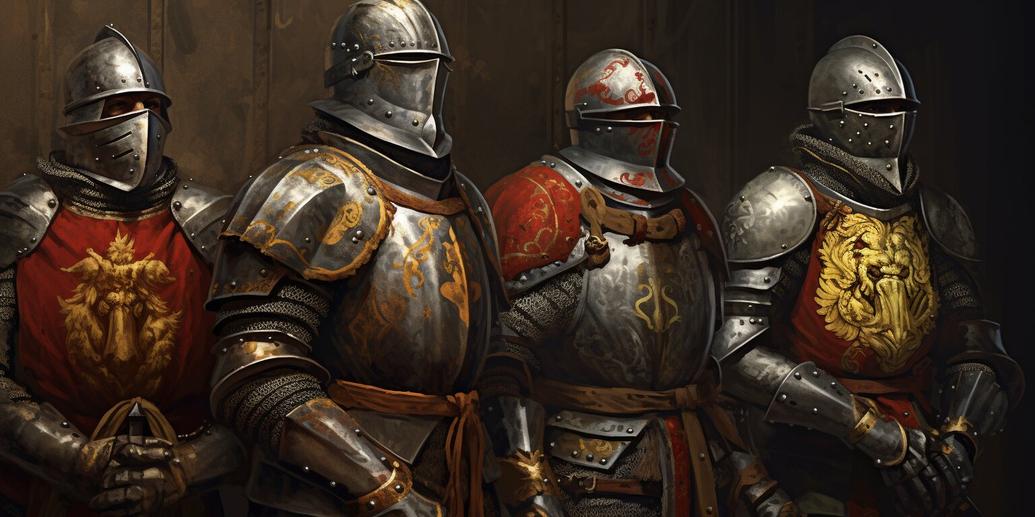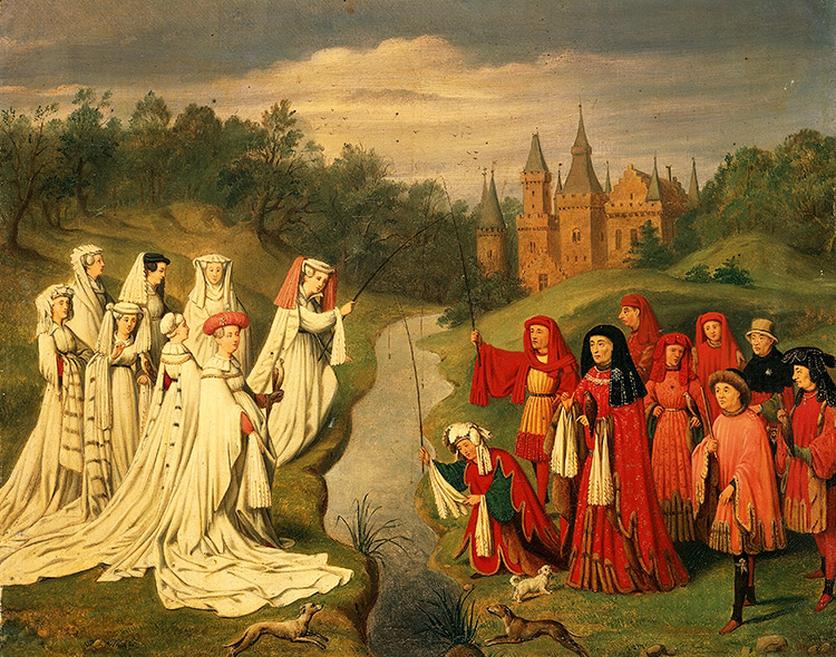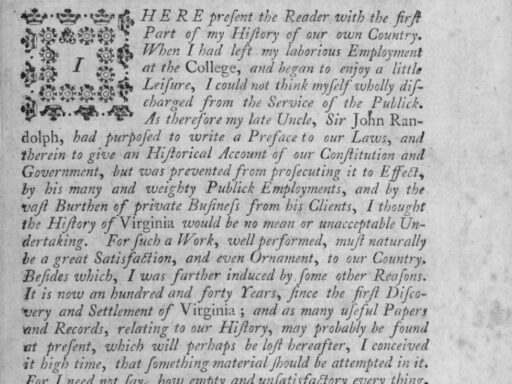Flails were used infrequently but effectively as weapons in medieval combat, particularly notable during the Hussite Wars in the 15th century. Their primary usage was by peasant soldiers who adapted agricultural flails into weapons. Beyond battlefield use, flails appear in judicial dueling contexts, as instructions for their use survive in manuals by Paulus Hector Mair.

The Hussite Wars showcase the most widespread military use of flails. These wars involved heavily armed peasant militias who converted farming tools into deadly weapons. Agricultural flails, originally designed for threshing grain, were modified with metal weights or spikes on the ends, increasing their lethality. This adaptation made flails accessible and effective for non-professional soldiers.
Flails deliver powerful, crushing blows that are difficult to block or parry with armor. The flexible chain or hinge connecting the striking head allowed flails to bypass shields and defensive stances. A well-trained soldier swinging a heavy ball on a flail could break shields or cause serious injury even through armor. This made the weapon especially useful against heavily armored knights or infantry.

Evidence of flail use extends beyond infantry combat. In some cases, mounted warriors wielded flails or morningstars in one hand, using the weapon’s momentum to strike opponents from horseback. This tactic exploited the concussive force and reach of the flail to target the head or shoulders of enemies in mobility-based combat.
Judicial dueling manuals, such as those by Paulus Hector Mair, describe flail techniques in detail, indicating their role in controlled, ritualized combat. This suggests flails were recognized for their damage potential and versatility in various combat environments.

- Flails saw notable military use mainly in the Hussite Wars, adapted from farming tools.
- They delivered crushing blows difficult to block with armor or shields.
- Mounted fighters sometimes used flails for concussive strikes in cavalry combat.
- Judicial dueling references confirm flails’ role in non-battle combat.
- The weapon’s design allowed effective damage against armored opponents.
How Often Were Flails Used as Weapons in Medieval Combat? How Effective Were They?
Flails were never the knights’ go-to weapon but popped up notably in specific medieval contexts, particularly during the Hussite Wars and some judicial duels. Their unique design made them effective at breaking through armor and shields, though their overall battlefield use was limited. Let’s dive deeper into the story behind this intriguing weapon.

Ever wonder how peasants with farming tools turned the tides of war? Well, flails started as humble agricultural implements. But in times of conflict, necessity sparks creativity. The Hussite Wars of the 15th century offer the clearest example. Here, a diverse group, mostly peasants bound by religious zeal, transformed their everyday routines into deadly combat tactics.
One can’t ignore how the Hussites wielded flails as brutal battlefield tools. These were not just wild swings in panic; they adapted their farming flails, essentially wooden handles with weighted ends—sometimes with metal added for extra impact—into weapons. The result? A swinging mass capable of delivering devastating blows to armored foes. This doesn’t sound like your average pitchfork fight, right?

Flails in the Hussite Wars: A Fields-to-Frontlines Transformation
The Hussite armies showcased ingenious ingenuity by converting common farming flails into war-ready implements. This wasn’t just folklore; historical accounts show these weapons were widespread among their ranks. The peasants, without access to expensive swords or lances, brought flails into combat due to availability and adaptability.

This strategy made sense. A flail’s design allows the heavy end to generate significant momentum, making strikes hard to predict and hard to block. Unlike a sword’s rigid blade, the flail’s chain and ball or spiked head could navigate around shields or armor plates. A single strong swing might break a shield or shatter a limb. So, while not the primary weapon for knights or nobles, flails offered peasants a fighting chance.
Judicial Duelling and the Flail’s Formal Role

Aside from battlefield use, flails have a curious mention in the realm of judicial duels. Paulus Hector Mair, a 16th-century fencing master and historian, provides detailed instructions on flail use, particularly for these formalized combat contests.
Judicial duels were trials by combat where justice was literally hammered out in the ring. It’s plausible that flails, with their unique striking capability, served as weapons in these duels. Mair’s work preserves knowledge about this weapon, suggesting it wasn’t merely a rustic last-resort but also part of a martial tradition.
Though documentary evidence for widespread battlefield use is sparse beyond Hussite contexts, flails’ appearance in duelling treatises points to their symbolic and practical roles within certain martial circles.
Why Were Flails Effective? The Physics of Brutality
Let’s get into the gritty details. Why did flails pack such a punch? The secret lies in their design. The combination of a handle, a flexible chain or hinge, and a weighted end gave the wielder an edge in overcoming defenses.
- Hard to Block: Armor and shields are excellent at deflecting direct blows. But the flail’s swinging nature allows the striking end to wrap around or bypass defenses.
- Shield-Breaking Power: The momentum from a well-thrown swing can crack or split shields. It might also injure the arm holding the shield—ouch!
- Crushing Blows: Even plate armor isn’t invincible against the crushing force of a solid metal ball flying at high velocity.
Imagine standing firm with a shield when suddenly a spiked ball whips around and slams onto your arm or your shield edge. The impact might stun or incapacitate. This fear factor alone could turn the tide in combat.
Flails off the Ground: Mounted Combat Use
Flails weren’t just foot soldier weapons. At the Higgins Armory Museum in Worcester, Massachusetts, experts note that flails and morningstars often appeared in cavalry arsenals. Mounted warriors typically wielded these in one hand, swinging to target enemy helmets.
Horseback use brought the flail’s concussive power to a whole new level. The added speed of a horse increased force, making head strikes brutal. While these weapons were likely less precise than swords or lances, their raw destructive power made them fearsome.
Farming Flails as Instruments of Death: Real or Myth?
Some modern skeptics downplay flails’ effectiveness, considering them clumsy farming tools. However, museums like the War History Museum in Yongsan, Seoul, display actual flails that resemble agricultural types but modified with metal ends for battle. These were used weapons, capable of deadly results.
It’s worth remembering that even seemingly simple weapons can kill when handled skillfully. A weighted ball swinging on a chain carries real momentum. With proper training, a flail could result in severe injuries or death, even against armor-clad opponents.
So, How Often Were Flails Actually Used on the Battlefield?
If you expected flails everywhere on medieval battlefields, here comes a dose of reality. Outside the Hussite Wars and judicial duels, documented flail use as a widespread weapon is limited. They never replaced swords, axes, or spears as the preferred arms for knights or professional soldiers.
Their appearance seems more situational—used by militias, peasants, or in special contexts rather than as staple military equipment. Perhaps their awkwardness and difficulty in training limited their broader adoption. Still, their psychological impact and sheer brutality made them effective when used correctly.
Wrapping It Up: Are Flails Worth the Hype?
Flails occupy a niche in medieval combat history. They weren’t the everyday weapon you’d expect but had moments of prominence. Their raw power made them deadly, especially in the hands of motivated fighters like the Hussites.
So next time you watch a medieval battle reenactment or dive into history, keep an eye out for the flail. It’s the underdog weapon, swinging wildly but with a punch that could break shields and shatter bones. Its story reminds us that history isn’t only about swords and knights but also about peasants turning humble tools into instruments of war.
Considering all this, would you dare wield a flail? Or does the unpredictability and risk make you stick to the trusty sword?
How common was the use of flails in medieval battlefield combat?
Flails were not commonly used in large-scale medieval battles. Their widespread use is mostly noted during the 15th-century Hussite Wars, where peasants adapted farming flails for combat purposes.
Were flails used in judicial dueling during the Middle Ages?
Yes, flails were likely used in judicial dueling. Historical manuals, like those by Paulus Hector Mair, include instructions on flail use, suggesting they had a role in formal combat settings beyond the battlefield.
What made flails effective against armored opponents?
The flail’s swinging heavy ball delivered crushing blows that could break shields or injure the wielder’s arm. Its momentum made it tough to block, making it effective against armor and defensive gear.
Were flails converted from farming tools for combat use?
Many flails used in combat were adapted from agricultural tools. Farmers’ flails were modified by adding metal ends to increase damage, turning them into deadly weapons in battle.
Could flails be used effectively on horseback?
Yes, flails were sometimes wielded with one hand while riding. This allowed riders to strike the heads of enemies with concussive force during mounted combat.




